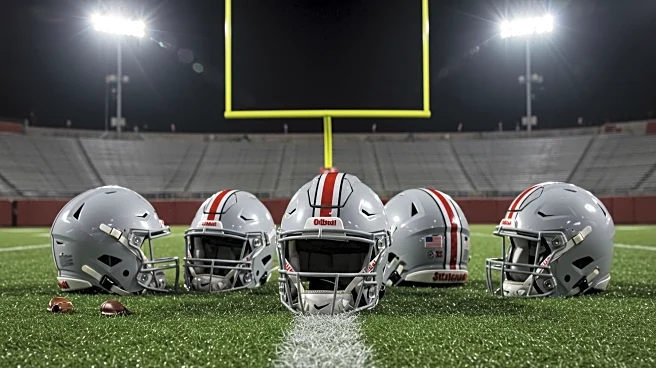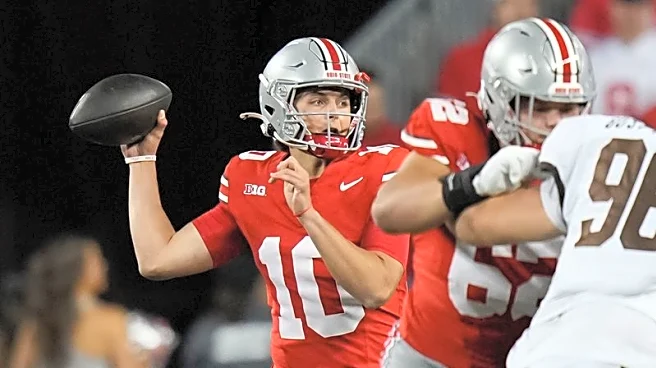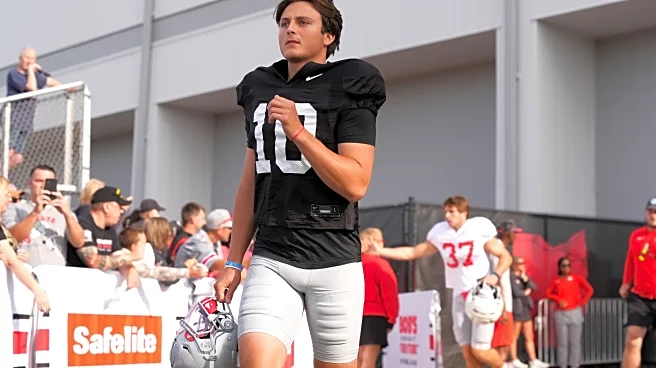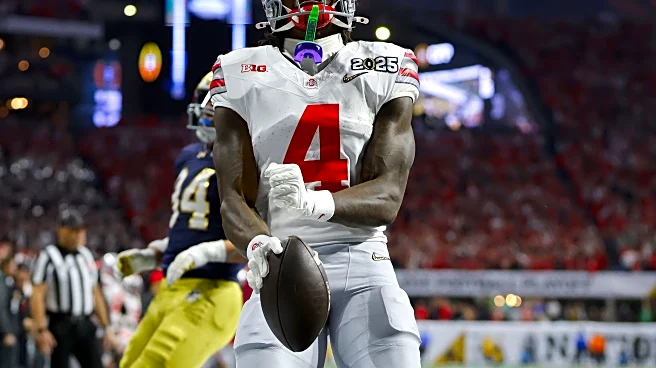What's Happening?
Ohio State football coach Ryan Day has announced that the team will continue its strategy of rotating players on the offensive line during the 2025 season, a tactic previously employed during the College Football Playoff. Day has identified six or seven players as starter quality, indicating a robust lineup. Additionally, Julian Sayin has been named the starting quarterback, following a close competition. The team is also seeing competition at the punter position between Joe McGuire and Nick McLarty. Defensive coordinator Matt Patricia and offensive coordinator Brian Hartline have provided insights into the team's defensive strategies and offensive preparations, respectively.
Why It's Important?
The decision to rotate the offensive line is significant as it challenges traditional football conventions, potentially offering Ohio State a strategic advantage. This approach could enhance player performance and adaptability, crucial for facing top-ranked teams like Texas. Naming Julian Sayin as the starting quarterback solidifies the team's leadership on the field, impacting game strategy and team dynamics. The competition at various positions reflects the depth and talent within the team, which could translate into a strong performance in the upcoming season. These developments are pivotal for Ohio State's aspirations in collegiate football.
What's Next?
Ohio State is preparing for its season opener against Texas, with the team focusing on refining its strategies and solidifying player roles. The coaching staff will continue to evaluate player performances and make adjustments as needed. The team's approach to rotating the offensive line will be tested in real-game scenarios, potentially influencing future tactical decisions. The competition at punter and other positions will likely continue, with players striving to secure their roles. The team's performance in the opener will provide insights into the effectiveness of these strategies and the readiness of the players.
Beyond the Headlines
The decision to rotate the offensive line could influence other teams to reconsider traditional strategies, potentially leading to broader changes in collegiate football tactics. This approach emphasizes adaptability and depth, which could become more prevalent in the sport. The emphasis on competition and player development highlights the importance of fostering talent and leadership within teams, impacting how collegiate programs are structured and managed.













